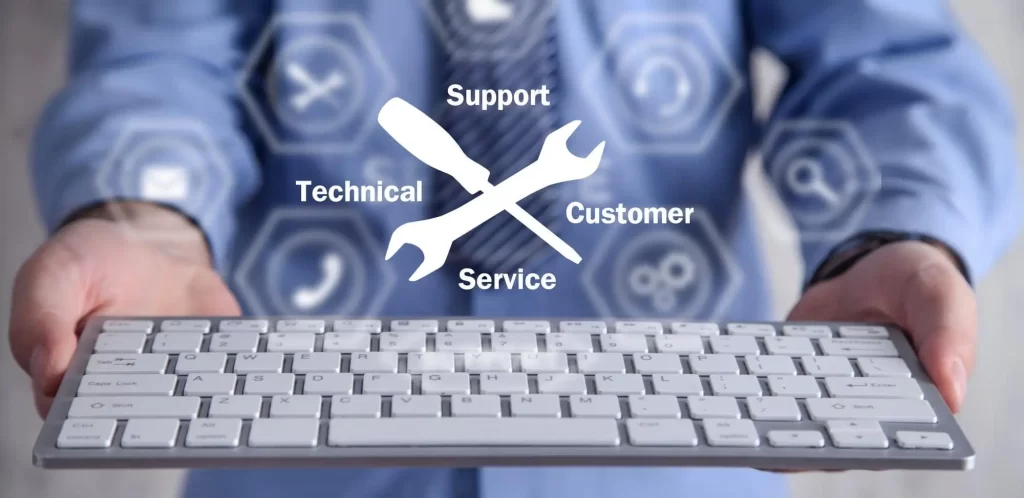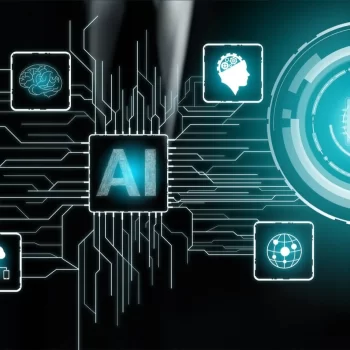The IT helpdesk has traditionally been the cornerstone of organizational support, tasked primarily with resolving technical issues and maintaining the robustness of IT infrastructure. These helpdesk ecosystems have long been characterized by their reactive nature, focusing on troubleshooting and resolving immediate IT problems as they arise. Traditionally, IT administrators played a central role in this framework, ensuring systems ran smoothly and efficiently, often under the pressure of minimizing downtime and enhancing user productivity.
However, the emergence of new-age IT administrators brings a proactive approach to the table. They leverage AI/ML and cloud computing to transform the helpdesk into a dynamic, adaptive ecosystem. The role of these administrators is not only to manage and resolve issues but also to predict and prevent them, thus enhancing the overall efficiency and effectiveness of IT support.
This shift significantly transforms the helpdesk ecosystem into a more integrated, strategic role. This blog will explore how these administrators are pivotal in reshaping its future, enhancing how services are delivered, and ensuring that technology aligns seamlessly with business goals.
Related blog: Helpdesk Redefined: Beyond Tech Glitches to Customer Delight and Happiness
The New Profile of IT Administrators
Modern IT administrators differ significantly from their predecessors in skills, qualifications, and tools. Today’s IT admins must master technical areas such as cloud computing, cybersecurity, network management, scripting, and automation. They are adept at managing both on-premises and cloud-based infrastructures with tools like Kubernetes, Ansible, and advanced cybersecurity platforms that use AI to preempt threats.
Educational requirements have shifted from an introductory computer science degree to specialized certifications like CISSP, CISM, or those in AWS, Microsoft Azure, or Google Cloud Platform.
Unlike traditional IT helpdesk roles focused solely on immediate tech issues and legacy systems, contemporary IT admins strategically shape IT frameworks and strategies. This transformation is crucial for IT to drive business growth and innovation. Today’s roles require a deep understanding of business processes and collaboration across departments to deploy technological solutions that improve efficiency and competitive edge.
These skilled, versatile professionals significantly influence the helpdesk ecosystem. They adeptly tackle complex system issues and spearhead technology integration. Their proactive approach optimizes systems and future-proofs businesses against emerging tech threats, enhancing the helpdesk’s role in today’s enterprises.
Technological Innovations Driving Change
New-age IT admins are integrating advanced technologies like AI, ML, and remote monitoring tools to transform helpdesk services. These technologies enhance service accuracy and efficiency, fundamentally changing service delivery.
AI and Machine Learning
AI analyzes helpdesk tickets’ content to sort and prioritize them, speeding up response times and boosting user satisfaction. ML algorithms predict and address potential system issues before they escalate, enhancing preemptive support.
Remote Monitoring Tools
With the rise of remote work, these tools are crucial for maintaining IT infrastructure from afar. They ensure business continuity by allowing quick issue identification and resolution.
Automated Ticketing Systems
Systems such as Zendesk and ServiceNow automate routine helpdesk tasks, like ticket management and resolution for basic issues, freeing up IT staff to tackle more complex challenges.
Chatbots and Virtual Assistants
Utilizing NLP, AI-driven chatbots and assistants like IBM Watson and Google Dialogflow offer instant, round-the-clock user support, allowing human agents to focus on more critical problems.
Collectively, these technologies not only improve the responsiveness and effectiveness of helpdesk operations but also shift the role of IT from reactive troubleshooting to strategic, proactive management. This ensures that helpdesk services can meet the evolving needs of modern digital workplaces, leading to a more efficient IT infrastructure and enhanced user experience.
Changes in Helpdesk Ecosystem Operations

Traditionally, helpdesks operated reactively, addressing issues as they arose. The emergence of modern IT admins equipped with advanced tools has shifted this approach to proactive helpdesk strategies, enhancing user experience and operational efficiency and strengthening IT infrastructure resilience.
Proactive Strategies for Helpdesk
Modern proactive helpdesks prevent issues before they impact the business through regular system maintenance, continuous monitoring, and predictive analytics. This approach minimizes downtime and enhances service reliability. For instance, automated tools can preemptively alert admins to unusual activities or failures, enabling swift resolutions often unnoticed by users.
Successful Implementations and Case Studies
A multinational corporation incorporated AI and machine learning to transform its IT helpdesk, introducing AI-driven chatbots for round-the-clock customer support and employing ML to accurately predict and prevent system failures. Additionally, a tech startup implemented an IoT-based monitoring system, leading to a 40% reduction in system-related complaints due to proactive anomaly detection and correction.
Impacts on User Experience and Operational Efficiency
The shift towards proactive helpdesk operations significantly improves user experience by ensuring system reliability and consistent performance, reducing service interruptions, and boosting overall satisfaction. Operationally, it allows IT admins to shift focus from crisis management to strategic initiatives, enhancing business growth and scalability.
New-age IT admins are pivotal to the transformative impact on the helpdesk ecosystem. They leverage proactive strategies and advanced technologies to elevate user experience and operational efficiency. This evolution sets new industry standards for more proactive, responsive, and efficient IT support.
Future Trends and Predictions
The IT helpdesk ecosystem is poised for transformative changes, primarily steered by the emergence of new-age IT administrators. These professionals, equipped with a progressive mindset and technological prowess, are redefining service management. A significant prediction for the future involves the escalating integration of AI and automation technologies. This trend will likely enhance efficiency, reducing response times and allowing human agents to focus on complex and nuanced issues.
As technology evolves, continuous learning and adaptation become imperative for IT admins to remain at the forefront and drive innovation within helpdesk services. We can also anticipate a more proactive approach in monitoring and maintenance as predictive analytics become mainstream, enabling IT helpdesks to prevent issues before they escalate.
Related blog: 20 Best Helpdesk Ticketing Systems & Tools in 2024
Conclusion
Throughout this exploration, we’ve seen how new-age IT administrators catalyze significant shifts within the helpdesk ecosystem. Their influence spans from implementing cutting-edge technologies like AI and machine learning to fostering a culture of continuous innovation and adaptation. The impact of these changes is profound, offering improved operational efficiencies and a better user experience. As we look forward, the continued evolution and integration of advanced technologies promise to enhance the capabilities and effectiveness of IT helpdesks further, solidifying their role as a critical component in the fabric of modern business operations.



















